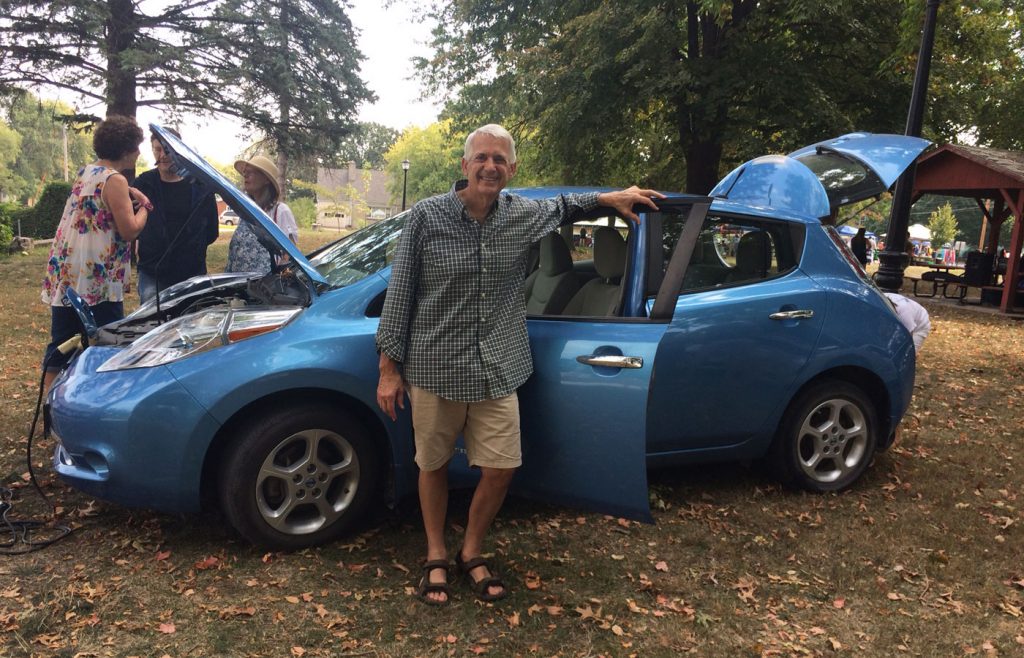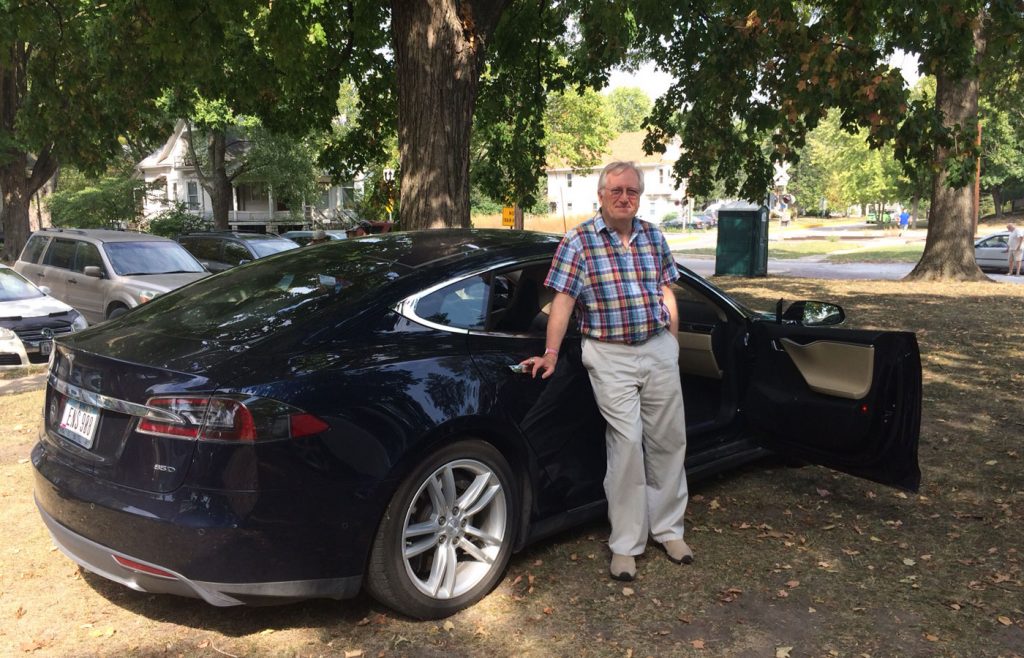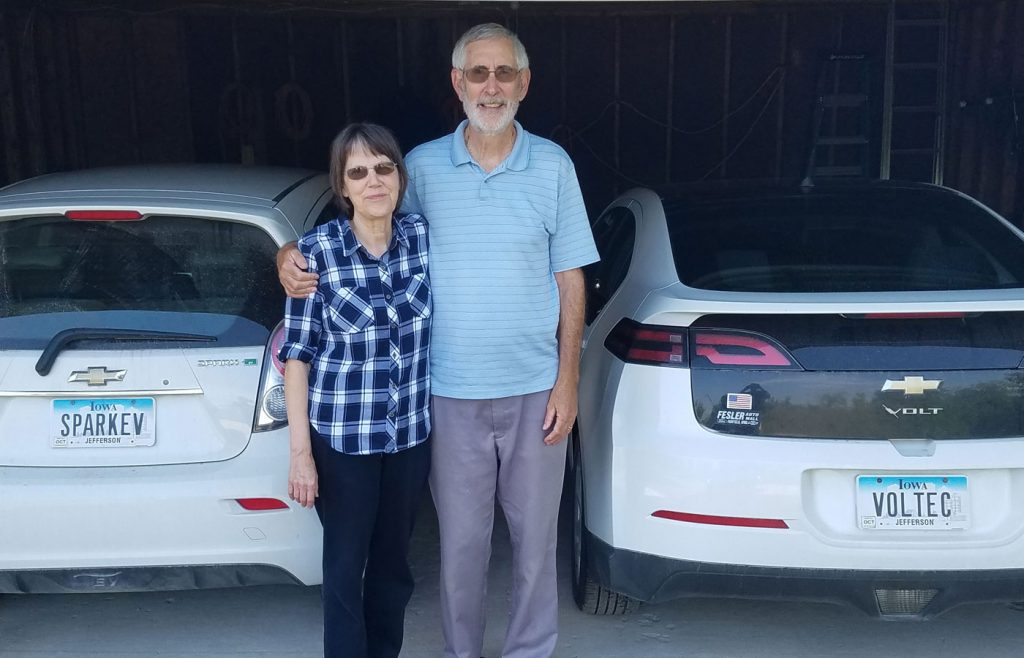
There was a time when running your car on vegetable oil seemed like a wonderful thing to do. In Fairfield, Tom Niedermeyer, Mark Stimson, and Michael Havelka converted their vehicles to run on discarded massage oil from the Raj health spa. Others drove their diesels on used frying oil.
When our thoughts were all about recycling, this was the height of relevance. But today, something far more critical demands our attention. As we face the intensifying dangers of climate change, the primary concern now is carbon. Burning any fuel, no matter where it comes from, releases carbon dioxide, the most prevalent greenhouse gas. Fossil fuels, when dug up and burnt, emit gases that threaten planetary well-being as nothing ever has before. That needs to stop, as close to immediately as possible, using all our inventiveness and resolve. Burning fuel from alternative sources (used oil, ethanol from any source, agri-digesters) still releases a lot of carbon.

Electric vehicles are a crucial part of the solution. Transportation produces 27 percent of greenhouse gases in this country. The number of electric cars has risen by more than 60 percent in two years, but we need to move much faster. A fresh wave of vehicles is out for 2018. The Tesla 3 and the Chevy Bolt are the stars in this lineup, each with a range of over 200 miles and a price little more than many conventional sedans, after incentives. But there is also a wide array of more affordable options, making an all-electric car a compelling choice today.
But doesn’t generating the electricity for these cars spew a lot of carbon? That depends. In Iowa, a third of all electricity comes from wind, and another sizable portion comes from natural gas. In other regions, hydro-power is a clean source. Beyond that, there are programs like Arcadia Power that let you source the electricity you use from wind, at an extremely attractive price (my wife and I offset 100 percent of our usage for about $5 a month). But wherever your power comes from, electric cars have far less net impact on the atmosphere than any conventional vehicle.
Recharging Strategies
The best strategy is to get your car’s electricity directly from renewables. A solar array is ideal, and incentives can make installing one a wise economic move. Some public car-charging stations use off-grid power. I’m lucky to work near the Sustainable Living Department at MUM, where I plug in a few times a week to charge our Nissan LEAF with power from PV panels and a wind turbine.
As a LEAF owner for almost three years, I can tell you that there is nothing like the feeling of driving your car powered only by the sun and the wind. It’s like driving the future, made manifest today. There are few better things you can do for the planet. And the sheer thrill of electric torque is a magnificent perk.

Tim Hart of Fairfield craved going all-electric as far back as he can remember. In 2007 he bought a Chevy pickup that had its engine pulled and replaced with an electric motor and batteries. The technology was primitive, and Tim could eke out only 25 miles on a charge. But by 2011 the Chevy Volt had arrived, a sophisticated plug-in hybrid. The Harts snapped one up, and since then their car has averaged an astonishing 99.3 MPG overall, including on multiple trips to the East Coast. In 2015 they added an all-electric Chevy Spark.
How Far?
One hears a lot about “range anxiety,” as in, “Will I have enough juice to get home?” I find this to be no concern at all, as we use our LEAF only for local travel. But what about long distances? Paul and Barbara Holden make a couple of trips each year from Boulder to Fairfield in their Tesla. In the past they had to route through Missouri to find enough super-charger stations to make the journey comfortable. But now, as charging stations proliferate, they can take I-80 like anyone else, stopping just a few times for a 30-minute charge. Vincent Argiro has driven his Tesla to Fairfield from British Columbia.
As of today, owners of a lower-end electric car will often want to have another vehicle—hybrid or conventional—that can be used for longer trips (or they can just rent a car for a long journey). But the better electric cars today, and the common models of the very near future, can work wonderfully as one’s exclusive transport.
In the end, even if some inconveniences or small sacrifices remain in going electric, it’s worth it without question, for more reasons than we can count.
Follow local climate change activists on Facebook: Climate Action Southeast Iowa.
